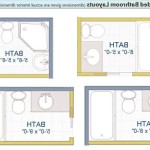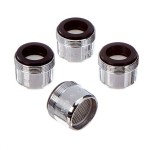How To Tile Bathroom Corners
Tiling bathroom corners presents a unique challenge in any tiling project. Achieving professional-looking results requires careful planning and execution. This article outlines the necessary steps and techniques for successfully tiling both inside and outside corners in a bathroom.
Preparing for Corner Tiling
Proper preparation is crucial for successful corner tiling. This involves ensuring the substrate is clean, level, and free of any debris. Any imperfections should be addressed before tiling begins, as they can affect the final outcome. For inside corners, check for plumbness using a level. For outside corners, ensure they are straight and at a consistent 90-degree angle. Applying a waterproof membrane to the substrate before tiling is strongly recommended, especially in wet areas like showers.
Selecting the appropriate tile type and size is also an important consideration. Smaller tiles often work better in corners, allowing for greater flexibility in accommodating curves and angles. Larger tiles may require more intricate cutting and can exacerbate any imperfections in the corner's structure. Choosing the correct adhesive is equally important. Select an adhesive specifically designed for bathroom environments and the chosen tile type.
Methods for Inside Corners
There are two primary methods for tiling inside corners: overlapping and using corner trim pieces. The overlapping method involves overlapping one tile slightly over the adjacent tile. This method is generally suitable for ceramic or porcelain tiles where the slight overlap is less noticeable due to the thin profile of the tiles. Start by tiling one wall up to the corner, leaving a small gap for the overlapping tile. Then, tile the adjacent wall, ensuring the edge of the tile overlaps the first tile slightly. The overlap should be minimal to avoid a bulky appearance. A grout line should be maintained at the corner, allowing for expansion and contraction.
Alternatively, corner trim pieces, specifically designed for inside corners, offer a cleaner, more finished look. These trims are available in various materials and finishes to match the chosen tiles. Apply adhesive to the corner and carefully set the trim piece in place, ensuring it's plumb and level. Then, tile up to the edge of the trim on each wall. This method simplifies the process and provides a professional appearance, especially for thicker tiles like natural stone.
Techniques for Outside Corners
Similar to inside corners, outside corners can be tiled using either overlapping tiles or specialized corner trim pieces. The overlapping method involves extending one tile slightly beyond the edge of the corner, creating an overhang. The adjacent wall's tiles are then butted up against this overhanging tile. This method requires precise cutting to ensure the overhang is consistent and creates a clean edge. It's often preferred for its streamlined look.
Alternatively, outside corner trims provide a protective edge and enhance the overall appearance. These trims come in various shapes and profiles, offering design flexibility. Apply adhesive to the outside corner and firmly press the trim piece into place, ensuring a secure bond. Then, tile up to the edge of the trim on each wall. This method offers greater protection against chipping and damage to the tile edges and provides a finished aesthetic.
Cutting Tiles for Corners
Accurate tile cutting is essential for achieving professional results when tiling corners. Various tools can be used for cutting tiles, including manual tile cutters, wet saws, and angle grinders. Manual tile cutters are suitable for straight cuts on most tile types. Wet saws offer greater precision and are ideal for intricate cuts and thicker tiles. Angle grinders equipped with diamond blades can be used for shaping and smoothing tile edges, particularly useful for creating custom fits in complex corners.
When measuring and marking tiles for cutting, ensure accurate measurements and consider the width of the grout lines. It is advisable to make practice cuts on spare tiles before cutting the tiles intended for installation. This allows for adjustments and ensures accurate cuts, minimizing material waste.
Grouting and Finishing
Once the tiles are set, allow sufficient drying time for the adhesive before grouting. Choose a grout color that complements the tile and overall bathroom design. Apply the grout using a grout float, pressing it firmly into the joints to ensure complete filling. Remove excess grout with a damp sponge, being careful not to disturb the newly applied grout in the joints. After the grout has dried, apply a sealant to protect the grout from moisture and staining.

The Tile Journal Of Hamilton In Woodstock Ga

How To Tile Inside Corners Howtospecialist Build Step By Diy Plans

How To Tile Corners Knowledge Foshan Hanse Industrial Co Ltd

The Tile Journal Of Hamilton In Woodstock Ga

How To Tile Inside Corners A Step By Guide

How To Tile Inside Corner In Bathroom Using Large Procelain Tiles Step By

How To Tile Inside Corners Tips And Best Practices Rubi Blog Usa

How To Tile Corners Howtospecialist Build Step By Diy Plans

Subway Tile Shower Corner

How To Finish Tile Edges And Corners Mountain Shower Edge Bathroom
Related Posts







